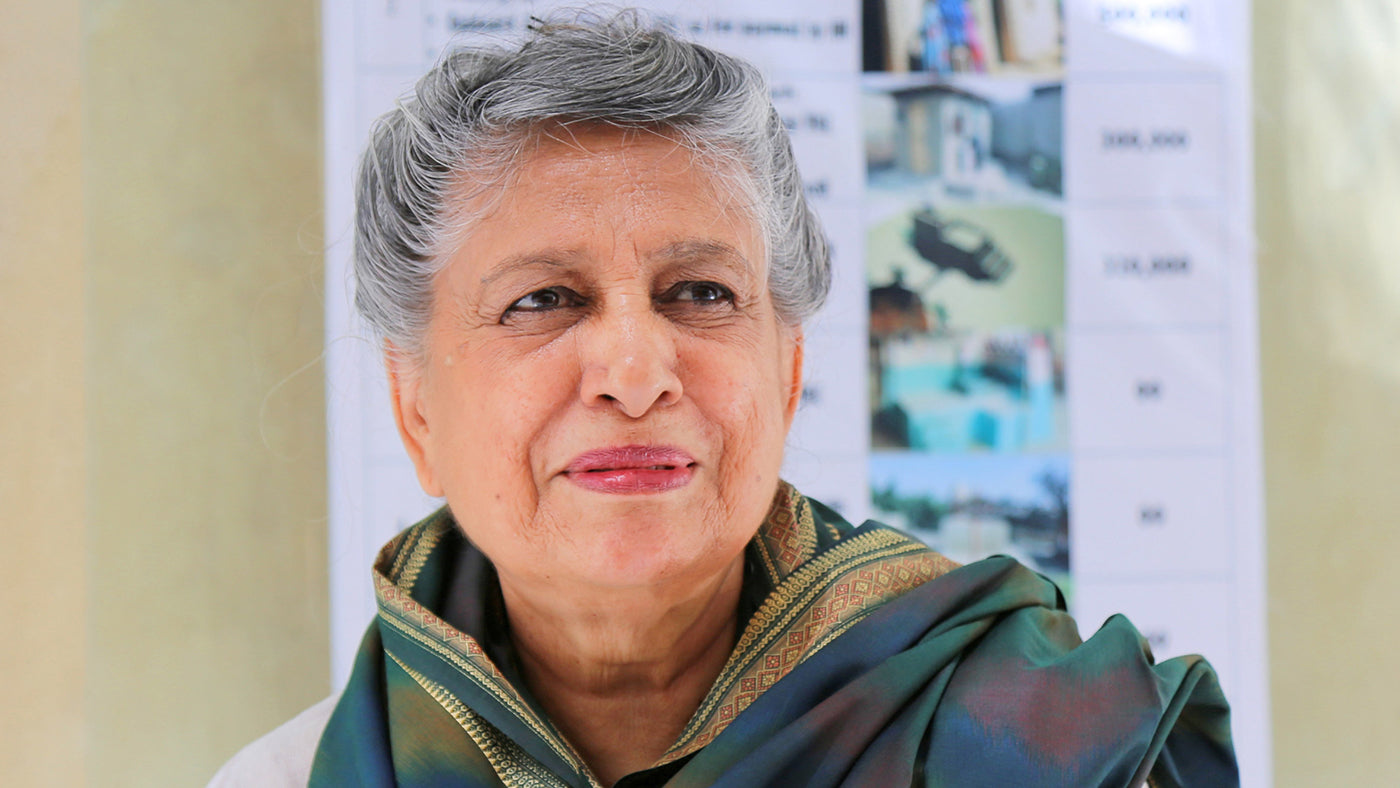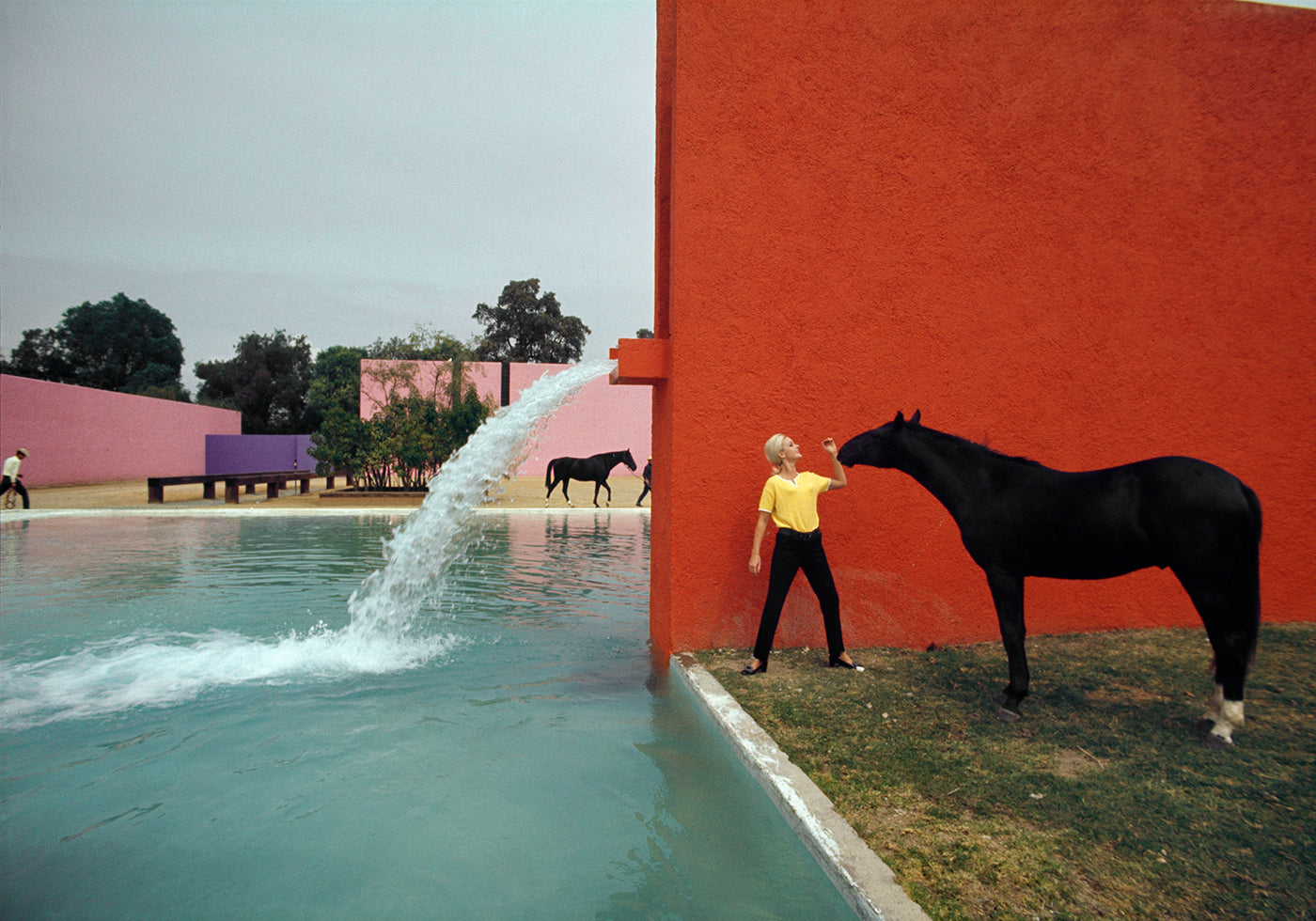
Yasmeen Lari: Architecture for Equal Access
Writer Steph Wade reflects on how a pioneer of Pakistani architecture uses design for humanitarian causes and inclusion
From monumental corporate buildings to humanitarian work in flood-prone rural villages, Pakistan’s first prominent female architect Yasmeen Lari has demonstrated how both education and simple design interventions can empower communities to live better lives.
The Finance and Trade Center in Pakistan’s largest city Karachi stands as an enormous commercial monument; its staggered facade of interconnecting blocks creates a visually commanding structure. Not far away lies the Pakistan State Oil House, a hefty concrete building that serves as headquarters to a petroleum corporation. Both distinguished venues were designed by architect and humanitarian Yasmeen Lari in the 1980s. But despite receiving many accolades for her standout designs, it was during this period that Lari shifted her focus toward humanitarian and social justice work. “A time came when I thought, ‘Enough of this,’” she says in The Ideal City. “It was my unlearning phase. I had to change my mentality as an architect in Pakistan. I come from a country where poverty levels are very high, so I felt that I needed to be more sympathetic to the people I design for.”
This approach came to a head in 2005, when a devastating earthquake hit northern Pakistan, killing over 80,000 people and displacing more than 400,000 families. “It was one of the most tragic incidents to ever happen,” Lari says. “Like everybody else in Pakistan, I just had to be there.” Despite having retired in 2000, Lari felt compelled to help in whatever way she could, which, as an architect, meant rebuilding homes. With no funding or workforce, she relied on help from local and international volunteers, training them with vernacular principles to rebuild 40,000 homes more securely. “We used earth, lime, and bamboo, as they were the most useful and prevalent,” she says. “Plus, they have tremendous qualities. Bamboo sequesters carbon, while lime absorbs carbon from the air.” Furthermore, it was important to Lari that these zero-carbon structures be built by the people who were affected by the disaster. When people are taught how to improve their situation themselves, “it means that you empower them to become self-reliant,” she says. “We need to share our knowledge with other people, to bring that accessibility to them.”

Yasmeen Lari advocates for social and ecological justice for marginalized communities through simple design interventions. At the Zero Carbon Cultural Center in Makli, Pakistan, villagers are trained in local crafts. (Photo: Heritage Foundation of Pakistan, The Ideal City)
This ethos forms the basis for Lari’s “barefoot social architecture” philosophy, which lies at the heart of the Heritage Foundation of Pakistan, a humanitarian aid organization that Lari founded with her husband. It concerns the idea that architecture should aim to tread as lightly as possible on our natural surroundings, and it should provide social and ecological justice to marginalized communities. A series of floods in 2010 and 2011 in the province of Sindh meant that many thousands were displaced and in need of shelter. Lari’s response was to collaboratively build community centers and women’s shelters raised on stilts, made from mud walls and strong bamboo roofs. The structures survived more floods a few years later. “My motto is ‘low cost, zero carbon, zero waste,’ but I would like it to be ‘zero cost’ as well,” she says. “We have to help people to be able to do things themselves.”
In addition to disaster relief, the Heritage Foundation offers training programs and tutorials to villagers to create items and necessities they can sell locally. “It goes beyond the just building,” Lari explains. “There is a whole barefoot ecosystem, a barefoot market of goods.” Each village may develop different products using mostly organic materials, from terracotta pavers and bamboo furniture to soaps and glazed ceramic Kashi tiles. “If they are sold locally and are economical enough, then everybody can buy them, and the quality of life of these people can improve,” she says. Almost 50 percent of Pakistan’s cities are informal settlements, which equates to 100 million people living below the poverty line. “That is a huge number of unmet needs to be fulfilled,” she says. “So this is what I've tried to do with barefoot social architecture—to at least give people back some of their pride and self-esteem.”

The bamboo Women’s Center in Sindh Province. Lari designed this following a series of floods in 2011. (Photo: Heritage Foundation of Pakistan, The Ideal City)
The best example of this is the chulah program, which teaches women to build hygienic, smokeless earthen stoves. The nonprofit World Habitat estimates that in parts of Pakistan, four out of every five households lack access to clean, safe cooking resources. Cooking typically occurs on open flame wood-burning stoves on the floor, which can be easily contaminated and cause serious respiratory infections. To keep safe from floodwaters and prevent illness, Lari’s idea was to enclose and elevate the stoves on podiums, which makes the preparation of food cleaner and safer, with great impact. “Women are cooking with great confidence now; they are sitting on their throne as they call it. The ones who would look down at them have given them more respect—their status is improved,” she says. Plus, “the platform provides a nice socializing place.” Since the program’s inception, more than 70,000 chulahs have been constructed. “That means easily 500,000 people benefit from it,” she says. It is the initiative Lari is most proud of, and a wonderful reminder that even the simplest design interventions can create sweeping social change. In 2020, Lari was awarded the Jane Drew Prize for raising the profile of women in architecture and also her work following the floods and earthquakes.
Although architecture is an industry dominated by men, Lari has found success and made a lasting impact in Pakistan because she understands the needs of women. “We need to raise the standing of women, whichever way we can. Nations cannot progress if we don’t,” she says. And while it is true that there are challenges with bringing accessibility to people in rural areas, and especially to women, cities around the world could learn from Lari’s initiatives. “Architects have to lower the carbon footprint of their buildings. They don’t understand the damage that is being inflicted,” she says. With 40 percent of all carbon emissions in the world coming from the construction industry, Lari argues that unless we start amending how we design, we will create even more damage to the planet. She believes the architecture industry at large could take cues from her methods and use of natural materials. “Architects who work for the one percent—and most do—can use earth, lime, and bamboo for their more spectacular buildings. Why not, you know? The mindset has to change now.”
The cities of tomorrow need to be accessible to all residents, regardless of gender or economic governance. Explore the recipe for The Ideal City.


